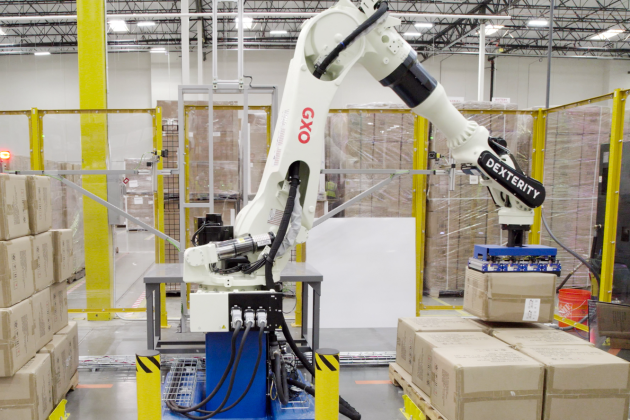GXO Volume Pressures Haven’t Slowed Outsourcing, Automation Growth

GXO had to endure the headwinds of a freight recession throughout 2023, resulting in softer customer volumes coming through its pipeline. But the contract logistics provider was able to eke out a sales gain to close the year, increasing revenue 5 percent to $2.6 billion, while improving net income to $73 million from $46 million in the year prior.
The logistics services company closed $1 billion of newly signed deals in 2023, including contracts with iconic global brands like Nike and LVMH. Nearly 40 percent of the new business came from companies seeking to outsource their supply chain, up dramatically from roughly 26 percent in 2022.
More from Sourcing Journal
According to GXO chief financial officer Baris Oran, the company already has signed nearly $600 million in new business impacting 2024.
At the Manifest 2024 supply chain and logistics conference, Adrian Stoch, chief automation officer of GXO, acknowledged the increasing trend toward outsourcing supply chain and logistics functions, “either through growth requirements or just the realization that they need subject matter expertise or thought leadership partners.”
GXO is also keeping the foot on the gas when it comes to automating its warehouse operations, with Stoch saying in a Tuesday earnings call that over half the $1 billion in new business are expected to generate revenue from automated operations.
According to Stoch, total revenue from automated operations rose to 42 percent in the fourth quarter, up from 37 percent in the year-ago period. A roughly 50 percent year-over-year increase in total warehouse automation tech implementations helped propel the increase, he said.
In the earnings call, Stoch noted that GXO’s automated projects have an average of 200 to 300 basis points (2 to 3 percentage points) of margin improvement compared to non-automated logistics projects.
Stoch told Sourcing Journal that GXO’s automation approach is split in two ways depending on the context of the business—resulting in either a large-scale transformation, or a modular or adaptive tech progression.
Large-scale transformations were more of the norm during the Covid-19 pandemic as there were more rapid adaptations to e-commerce growth, in which GXO “saw that many retail customers had launched these massive million square foot buildings.”
But in the past two years, the projects have “rebalanced a little bit,” Stoch said. With the modular progression, GXO works within an existing warehouse operation to deploy plug-and-play technologies like autonomous mobile robots (AMRs) and machine-vision technology like sensors without requiring a major IT lift.
“It’s an entire spectrum,” Stoch said. “On the one end, companies can come in with a very well-defined strategy. ‘Where do we need to be 10 years from now?’ We have companies that have done that exercise, and they say, ‘OK, so this is how you fit in.’ Then there are those companies that haven’t figured out any pieces, and need us to help them figure out their road map.”
One trend that stood out to Stoch in 2023 was the maturing of existing automation solutions that can be deployed out of the gate. The chief automation officer expects more “combo offerings that evolve from the current slate of technologies built to solve a discrete problem like picking, sorting and transportation of products.
“Previously, you’ve had a concept of goods-to-person robotics,” Stoch said. “But the innovation that’s going on now is evolving the sorting, and the delivery of the complete order to a team member all at once, as opposed to getting four totes, and having to rejig their product from the four totes into a singular tote.”
In the most recent example of GXO’s automation expertise, the company revealed during the Manifest show that it was piloting AI-enhanced robotics with Dexterity. These robots are built to depalletize, label and repalletize packages in an effort to optimize the inbound and outbound performance in the warehouse.
Stoch noted that GXO prefers partnerships with AI-based solutions that aren’t claiming to fix 20 problems at once, making deployment more tangible.
“The way that I look at it, when a vendor is speaking to me about a very specific problem that their AI solution solves, I become very interested,” Stoch said. “The smaller the problem they’re looking to solve, the more interested I am. Very specific problems—that’s where we get traction.”
For 2024, GXO guided to organic revenue growth of 2 percent to 5 percent, which doesn’t count sales gained from any acquisitions like the $181 million PFSweb deal. Additionally, adjusted EBITDA is expected to range between $760 million and $790 million.
“We expect the softness in volume to carry into 1H24 with potential growth in 2H24 as comparisons get easier,” said a UBS Securities research note, calling the organic revenue growth projections “reasonable.”

